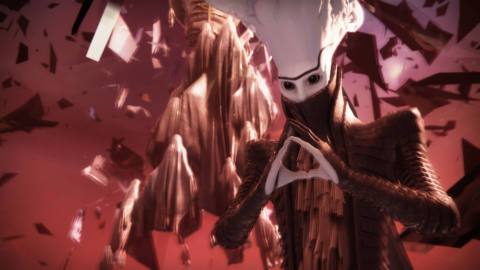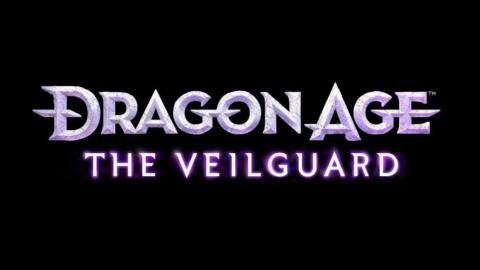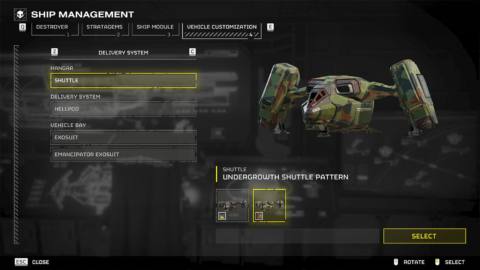Baldur's Gate 3 serves up a bounty of massive, complex dungeons primed to gobble up unprepared adventurers, but the one that stuck with me the most—even now, a year after launch—has to be the House of Hope. This late game dungeon shares the limelight with some other corkers, like the exceptional Iron Throne, but still manages to stand out thanks to its audaciousness. To mark the RPG's one year anniversary, I spoke with the writers and designers involved in its creation to find out how my fave came together.
The House of Hope is the climax of the Raphael storyline. This charming devil, who keeps cropping up throughout the game, had been part of the plan from the early days, though he went through a lot of different iterations.
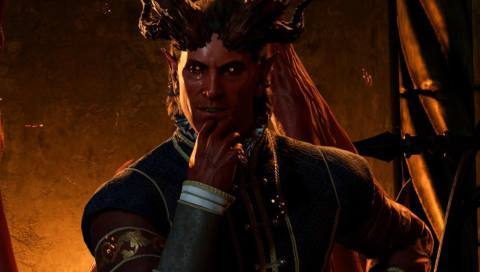
“The original brief for Raphael was that you are going to meet this devil on a bridge,” says Larian CEO Swen Vincke. Originally, he was known as the Monitor. “He was watching you from afar, continuously.” One version of Raphael made him more as a side character, but at one point he was also a lot more active, “offering you a way of getting rid of your tadpole in the very beginning, because the original vision of the core story was, you're gonna get multiple ways of dealing with your tadpole, but you're gonna realise it's not gonna work out and then you're gonna have to do something else.”
Ironically, the most fun was when the player was caught and all hell broke loose, which is why this always happens in the released version.
Nikita Radostev, gameplay scripter
While a lot of things about Raphael changed—originally he was Gortash's father—what did stick were his digs: the House of Hope. But that also changed shape quite a few times. “At least four times,” says gameplay scripter Nikita Radostev. “At one point, it was a house full of devilish traps and puzzles that needed to be solved to gain access… not to the Orphic Hammer, but to another secret hellish location. In another iteration, it was a full-fledged heist where you had to bypass all the defences unnoticed and successfully escape the House of Hope without Raphael knowing.”
The actual dungeon does involve a heist, but not to the degree of the scrapped version. The problem was, none of these earlier concepts were quite fun enough. “Ironically, the most fun was when the player was caught,” Radostev says, “and all hell broke loose, which is why this always happens in the released version.” One thing that was missing from the previous versions was the ability to properly explore not just Raphael's abode, but Raphael himself—what makes the final version work is that you're really getting to know your charming tormentor.
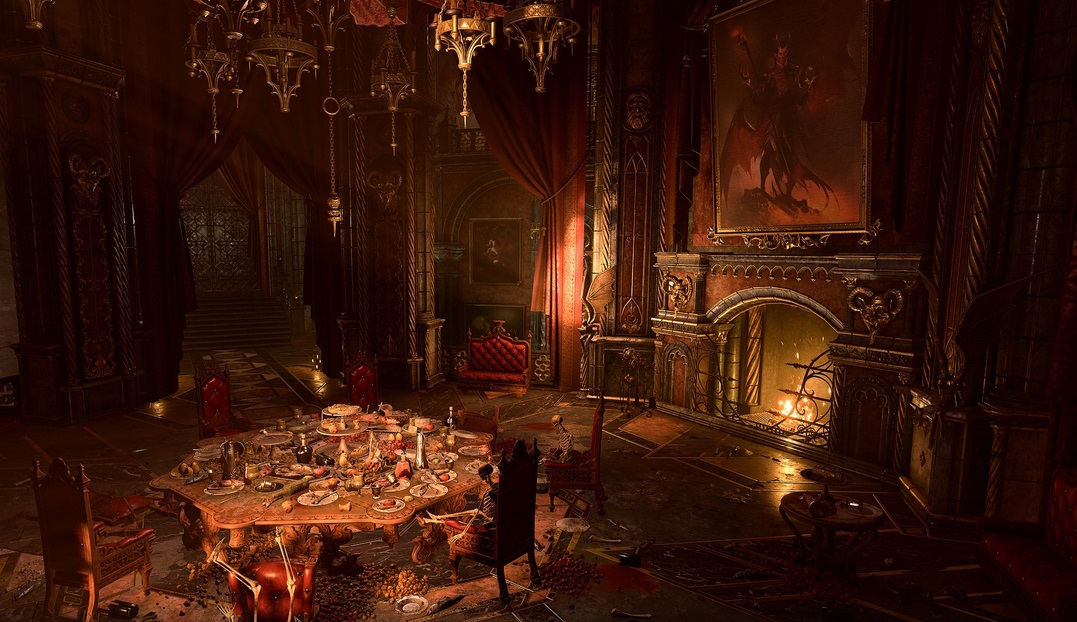
“With the House of Hope, we wanted to make it about Raphael,” says senior RPG designer Viacheslav Kozikhin. “He's our sole pillar. The dungeon was built around his persona: how does the place where he lives look, how does he treat the poor souls he captures, how do these poor souls perceive him, how does he have fun, and what does he think about himself—and we show that he loves himself very, very much.”
Nowhere is this narcissism more obvious than when you encounter Haarlep, the incubus that serves as Raphael's concubine. He takes the form of his master, because nobody is sexier or better than Raphael himself. This devil really needs to go to therapy.
To capture all of this, Larian came up with a “simple but very visual pitch—the fucked-up Disneyland,” says Kozikhin. “We invited players to stay for a ride in Raphael’s world and pay the harshest price for doing so.”
Letting you peacefully explore Raphael's abode, for a time, gives it a very different vibe from dungeons like the aforementioned Iron Throne or the complex Gauntlet of Shar. “Instead of pushing players into combat we focused on creating narrative tension,” says Kozikhin. “We hint that Raphael will come and it will be the end, some characters shout it out directly, and at the same time, we maintain that sliver of hope that players can leave without facing the devil's wrath.”
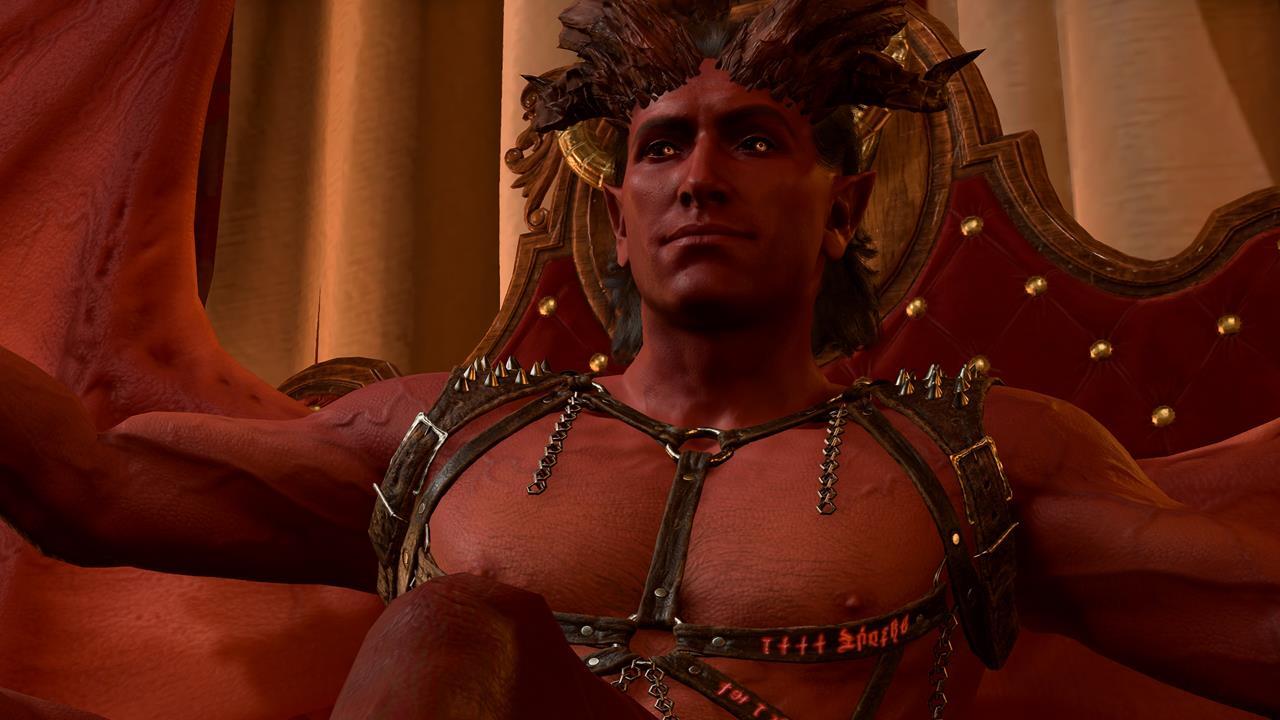
Of course, there's no avoiding the devil's wrath, and when the peace is broken, says Kozikhin, we get to see a very different side of the dungeon. “Everything changes in one moment: the same dungeon, but a different experience. This contrast is what makes the dungeon stand out, and we aimed to keep it that way.”
This contrast is what makes the dungeon stand out, and we aimed to keep it that way.
Viacheslav Kozikhin, senior RPG designer
I died a lot to countless horrible Hell Spheres and the house's now very aggressive denizens. “The escape sequence that occurs after you lift the hammer from its pedestal—or destroy the contract if you made that grave mistake—went through many iterations on its own,” says Radostev. “This moment, when the whole house turns upside down, should've served as a final reminder: you shouldn't have come, and now you're going to pay for it. So it was intended to be sudden, fiery, explosive, and relatively challenging, knowing that it's only an appetiser before the main meal. And finding the balance between 'it's too much' and 'it does nothing to me' was the part [where] we spent weeks trying different approaches and setups, shuffling around enemies and traps. We even tried it without those Hell Spheres, but Swen was adamant about including them, and rightfully so.”
Thankfully, you don't have to get through it on your own. You've got Hope herself lending a hand. It was important to give players a guide, Kozikhin tells me. “Someone who knows the place and can direct them, and someone they can relate to, even if she is slightly mad. With such a character, it’s only natural to allow players to save her (or not) in the process. And since we love puns in this dungeon, we made Hope really useful in combat—free Divine Intervention is no joke—so it would be a lost cause to fight the devil without Hope.”
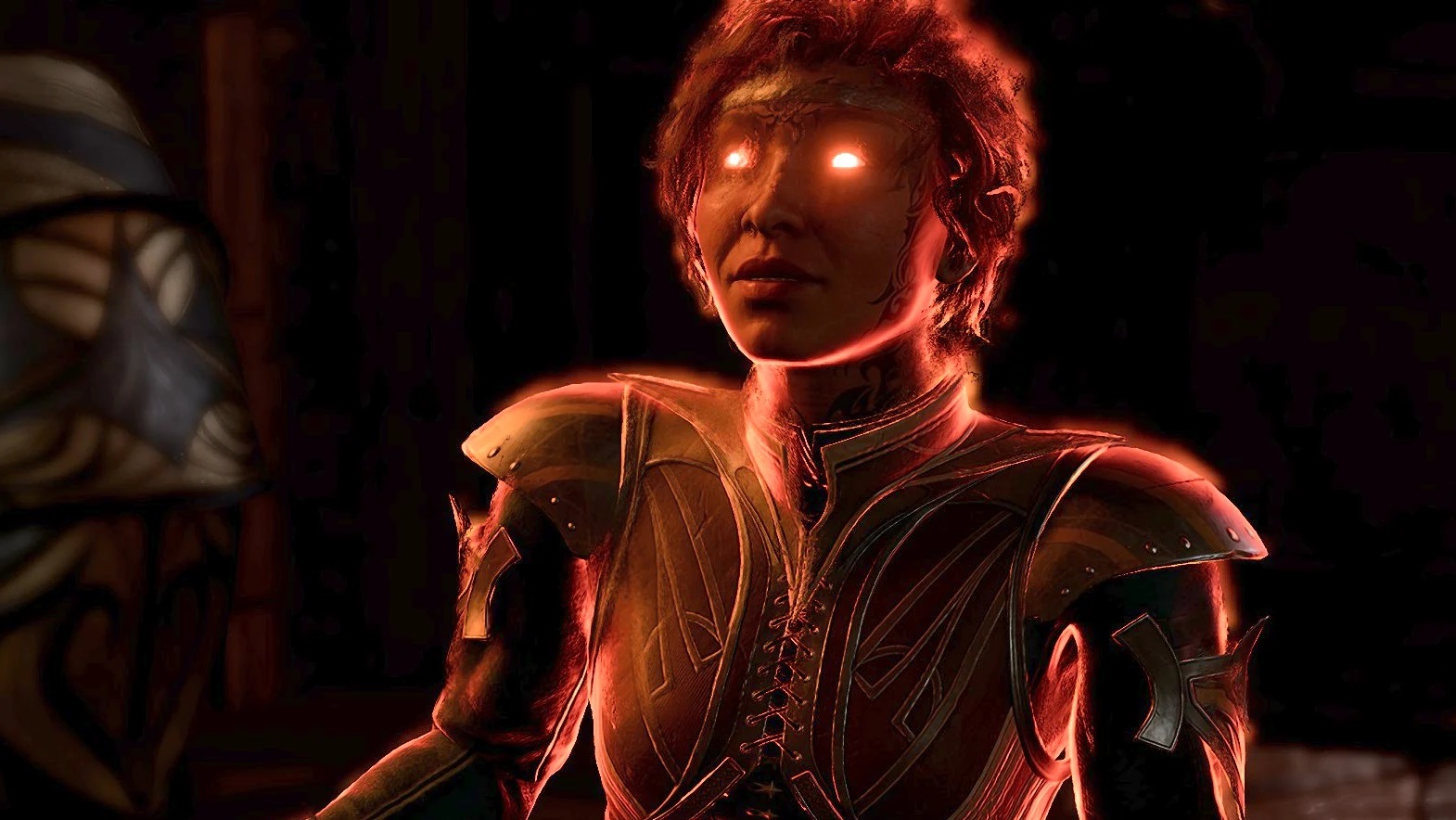
Like so much of the dungeon, Hope went through some changes. “At one point, Hope was the house itself,” says writing director Adam Smith. “A sentient building that Raphael had dominated and bound to his will. It seemed antagonistic at first, but if you played your cards right, it would help you to find your way through. That version only ever existed on paper, but it was one of the early concepts. There are traces of it still, in the character Hope, who sometimes seems like she’s an abstract figure, embedded in the house’s madness.”
Once you've survived the dungeon's transformation and freed Hope's physical form, it's time to meet the big guy: Raphael. It's a challenging encounter, but it's also a playful one. Case in point: Raphael's HP is set to 666.
“At that point in Lower City, players have accumulated so many potions, weapons, summons, powerful artifacts—some of which are right there in the House of Hope—that health points alone don't make much difference,” says Radostev. “This is why Raphael has a lot of support, soul pillars that boost his AC, devastating spells, and a couple of soul tricks up his sleeve. The main challenge there is not to die and get to the point where you can deal any damage at all. But to start tweaking the numbers we still needed a big HP number in a certain ballpark, and 666 was such a low-hanging fruit that we just couldn't resist.”
The most memorable part of this encounter, of course, is Raphael's song. A boss who sings his own theme? Gotta love it. “One of the ways I described Raphael to Andrew Wincott, the guy who performed him, was he's a theatre kid who got too much power,” says Smith. The song idea originated with Vincke, who actually wanted it to play a bigger role, starting when all hell breaks loose and you're trying to survive the house's various traps and devils. For flow purposes, however, it was pushed back to the final confrontation with Raphael.
Wincott had never performed a musical number before, but Smith remembers Larian asking the casting agency if Wincott could sing. “And the response we got back was yes. Then when I spoke to him about it, he was just like 'Well, what I said was, I don't think so.'” To make up for Wincott's lack of singing experience, Larian considered a rap, as well as a Leonard Cohen-style spoken word song. Either of which I'm sure would have been incredible.
He wasn’t joking; he genuinely thought it was a musical. He’s fantastic.
Adam Smith, writing director
The end result was something almost Disneyesque, which fit in perfectly with the pitch for the entire dungeon. Smith recalls meeting Wincott in-person for the first time at the wrap party, where he showed the actor the YouTube video of his song, which at the time had a million views. “He said, 'My god, are the other actors' songs as popular?' Then he said, 'Well, was it not a musical?' He wasn't joking; he genuinely thought it was a musical. He's fantastic.”
Ultimately, the version of the House of Hope we got sounds like the most coherent and well thought out iteration, but I still wish I'd seen the version where, I kid you not, you got to fly the house through the realm of Mephistopheles. “Somewhere on our harddrives,” says Vincke, “Mephistar [Mephistopheles' citadel] exists.” This also led to one of Vincke's favourite scenes, where you'd meet Mephistopheles, he'd thank you for defeating Raphael, while the devil was hanging in front of this massive, titanic archdevil.

One of the reasons this was all cut was because an additional adventure in the Nine Hells just seemed like too much. “We played it,” says Vincke, “and it was heist after heist after heist, and it didn't flow properly.”
“It's the fatigue thing,” adds Smith. “It was exhausting. It was a dungeon after another dungeon.” Some of this still exists in another form, though. For instance, you can tell that the House of Hope is flying when you go out onto the balcony. And if you visit the shop where you first entered the house, after defeating Raphael, you can click on a crystal ball and see a vision of Mephistopheles.
“The thing is,” says Smith, “all of it was in service of the game. When you see people talk about all the cut content, there's a reason. It's editing.” This is also why we never went to Candlekeep, or the Red War College, where you'd originally meet Wyll. These would have been cool places to visit, but in the end they didn't make the game better.
For more of Larian's insights into the development of Baldur's Gate 3, as well as the past, present and future of the studio, check out the first anniversary interview I conducted with Vincke and Smith. Now I'm going to listen to Raphael's song on repeat for the rest of the day.


